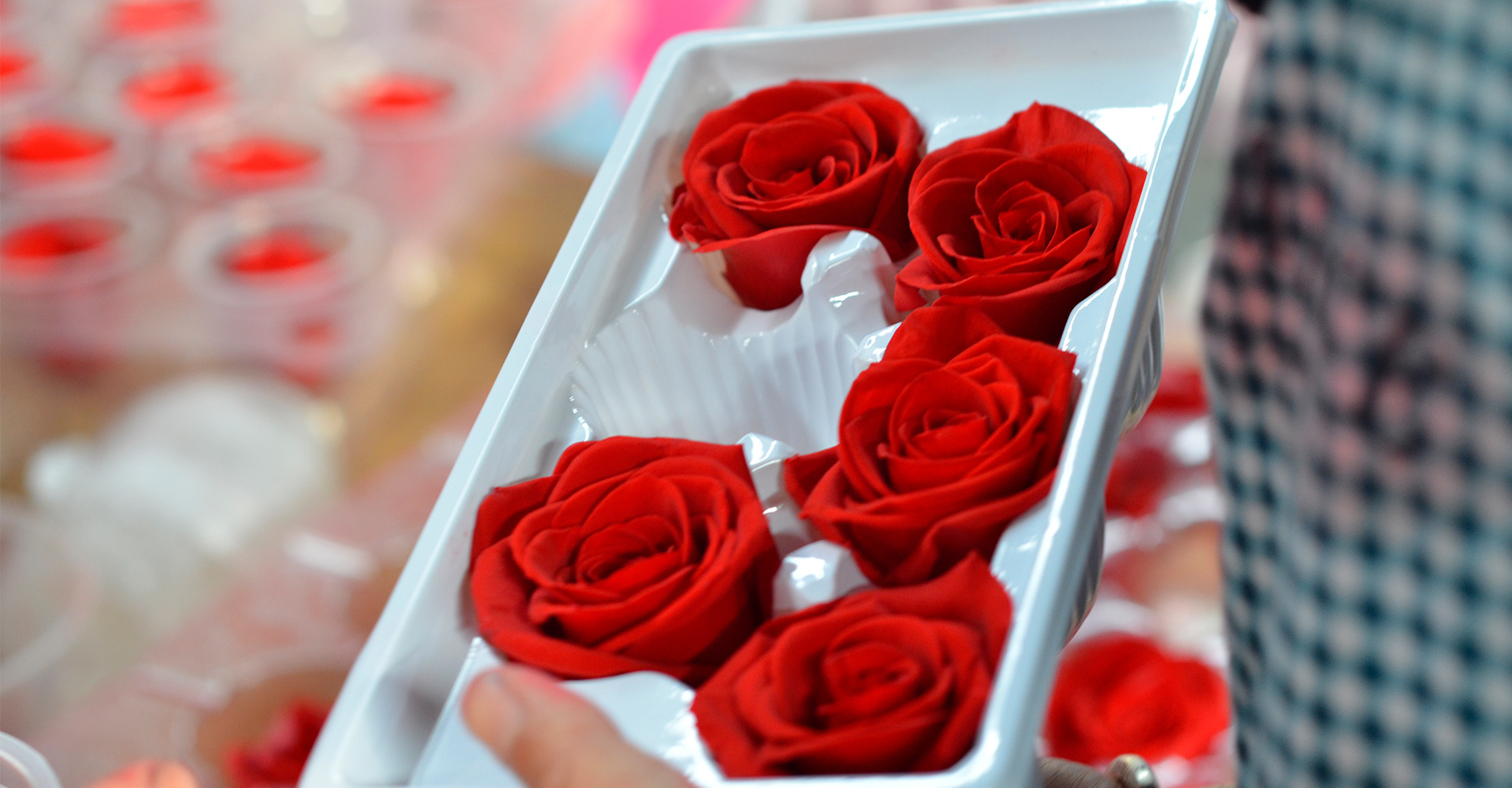Exploring the charm and significance of everlasting flowers
2025-03-26

The Magical Origin of Preserved Flowers
The origin of preserved flowers can be traced back to18the late 19th century in Germany, where botanist Clovis Gregorius first experimented with preserving flowers using paraffin and beeswax, marking the beginning of exploration in flower preservation.19In the late 19th century in France, people further attempted dehydration using desiccants, but this was limited due to the fragility of petals. A breakthrough in modern preserved flower technology occurred in20the mid-20th century, when the British inventor Evans invented a special solution immersion method, replacing the water and pigments in plant cells to maintain the natural shape and color of the flowers, laying the foundation for the industrialization of preserved flowers. Subsequently, this technology was introduced to Japan and quickly became popular. Combining with the demands of the Asian market, it gradually formed a global industrial chain, with Yunnan becoming an important production base due to its high-quality rose raw materials.
The Production Process of Preserved Flowers
The production of preserved flowers requires30multiple processes and takes60days:
1. Material Selection: Select fresh, full-bodied flower materials (such as roses and hydrangeas), which must be free of pests and diseases and not wet.
2. Decolorization and Dehydration: Soak the flowers in a mixture of ethanol and methanol for24hours until they turn white; then transfer them to a polyethylene glycol solution and seal for36hours to completely remove moisture.
3. Dyeing and Shaping: Prepare dyes as needed, evenly apply or soak the petals, and even create colors that do not exist in nature (such as blue enchantress), and air dry for5-7days before shaping.
4. Post-processing: Use environmentally friendly preservatives to extend the shelf life; some advanced technologies can keep flowers for ten years.
The Unique Charm of Preserved Flowers
The charm of preserved flowers stems from their multiple advantages:
- Aesthetic Value: Retains the texture and fuzzy details of fresh flowers; richer colors (such as gradient and metallic colors) are available; flower arrangements can be customized.
- Practicality: No watering required, no risk of pollen allergies, suitable for homes, weddings, and other scenarios.
- Emotional Symbolism: Originating from the European legend of “the warrior and the maiden,” it is given the flower language of “eternal love,” becoming a carrier of commitment and blessings.
- Environmental Significance: Reduces flower waste; in Yunnan and other places, surplus peonies are used to make preserved flowers, helping flower farmers increase their income.
Preservation Tips for Preserved Flowers
- Environmental Control: Avoid light and moisture; avoid high temperatures (such as near radiators) and humidity (in the south, desiccants or baking soda can be used to absorb moisture).
- Cleaning Method: Use a hair dryer’s cold air to remove dust; if damp, use a tissue to absorb moisture and then gently blow with warm air.
- Taboos: Do not touch the petals frequently; avoid heavy pressure or washing.
The Cultural Significance of Preserved Flowers
Preserved flowers blend the essence of Eastern and Western cultures:
- European Legend: The “everlasting rose” symbolizes love that transcends death, giving rise to the custom of hiding petals in the Bible.
- Asian Development: Japan positions it as a high-end gift; China combines it with traditional peony craftsmanship, giving it a new meaning of “wealth and eternity.”
- Modern Interpretation: It has become a symbol for urbanites to combat time anxiety, embodying the spiritual pursuit of “lasting beauty.”
Conclusion: The Future of Preserved Flowers
With technological advancements, the preserved flower industry is moving toward intelligence and sustainability:
- Technological Empowerment: Gene editing optimizes flower shapes; bio-preservation technology extends the lifespan to several decades.
- Environmental Trends: Promoting ecological planting and recycling to reduce resource consumption.
- Market Expansion: E-commerce promotes personalized customization, such as constellation themes and anniversary-exclusive designs, penetrating into areas such as business gifts.
Preserved flowers are not only a re-creation of natural art, but also a crystallization of human emotion and technology. From German laboratories to thousands of households around the world, it connects poetry and warmth across time and space with its eternal beauty.

Previous Page:






